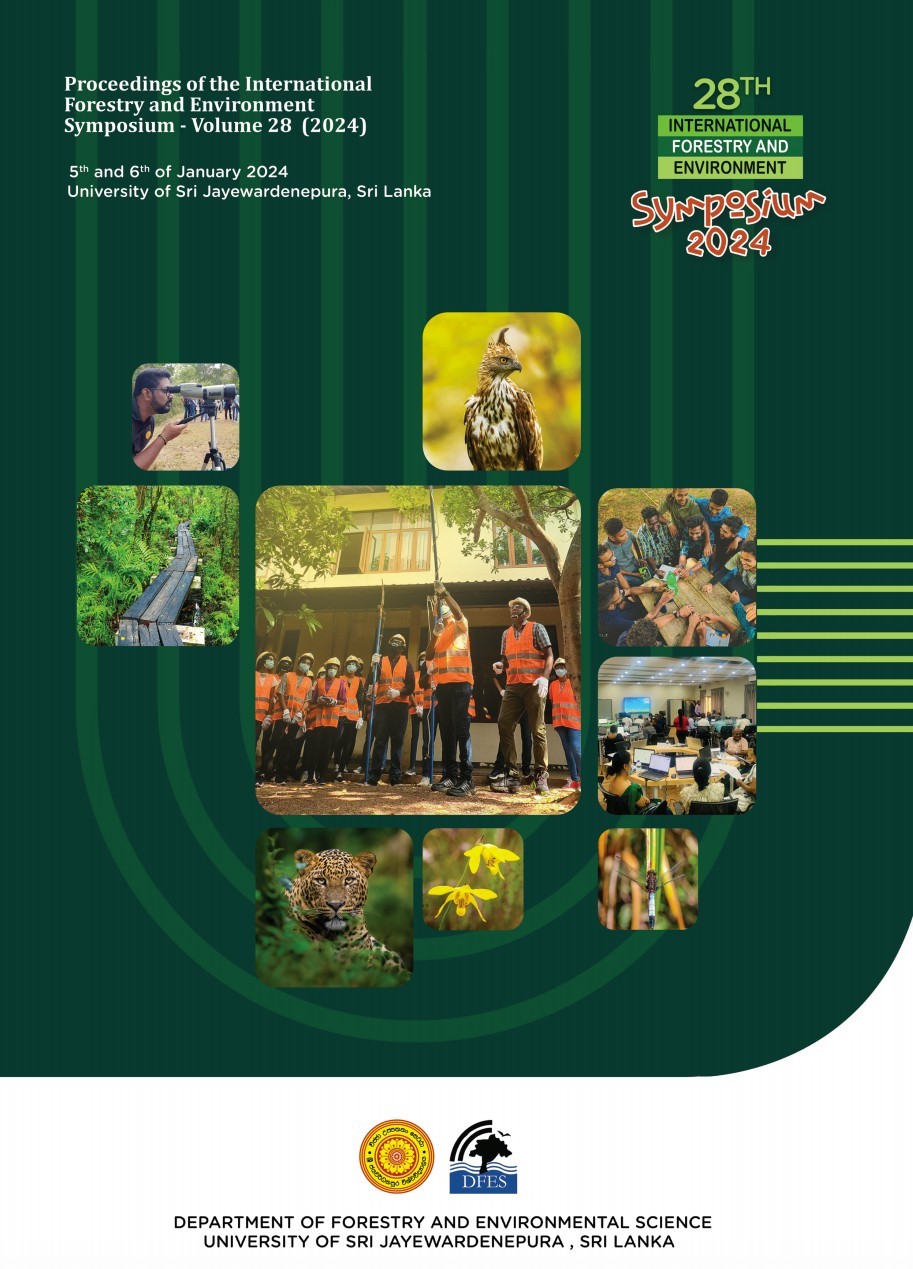Application of Geospatial Technology to Assess Pressures and Threats to Nature Related to Human Activities in Wilpattu National Park
DOI:
https://doi.org/10.31357/fesympo.v28.7026Abstract
Expanding agricultural land is one of the humanities largest and most considerable environmental impacts. It has transformed habitats and is one of the greatest pressures and threats to biodiversity. By 2020, with an estimated population of 22 million, the per capita arable land is about 0.158 hectares. This indicates heavy pressure on agricultural land use. This agricultural land use causes deforestation. Illegal deforestation results in the destruction of habitat and the restriction of wildlife movements. Apart from the direct destruction of habitats of flora and fauna that provide humans with valuable resources, removing forest cover puts many essential natural functions out of order, which may lead to a range of severe consequences. There have been many attempts at human encroachment at Wilpattu National Park, Sri Lanka, and its Forest Reserves; however, it has never been done at this scale with the awareness of the Government Authorities, who failed to act. The Easter end of the Wilpattu National Park lies between the divisional secretariat of Mahaviachchi, Karuwalagasweva, Nochchiyagama, and Rajanganaya. The buffer zone of 1.6km has been marked from the Wilpattu reserve boundary. This study uses the integrated land use assessment by applying a land use evaluation model that evaluates biophysical and human-related data in eight GN Divisions (Hunuvilagama, Kuda Vilachchiya, Track 13, Matha Kiramam, Palaikuli, Pahalapuliyankulam, Parana Eluwankulam, and Andiyapuliyankulam) in buffer zone in Wilpattu National Park. Environmental impact has been assessed based on image classification and area calculations. According to the analysis done in the human settlement, it indicates encroachment of the restricted zone for human settlement. The area of this buffer zone is approximately 33,147 ha. About 9,190 ha of this buffer zone area has been utilized by humans in various ways. Spatial- temporal data in 2003-2019 satellite image classification identified permanent building/housing units within the 1.6 km restricted zone, which has been increased in marginal villages. Mullikulam and Eluwankulam GN Divisions are the most critical and rapidly encroached areas in the forest village in the Wilpattu National Park. According to the GIS-based maps, cultivation, road construction, and residence are significant factors influencing the major ecosystems in the eastern part of the Wilpattu Park Boundary. Mahavilachchi and Nochchiyagama can be identified as the villages where elephants roam more and the areas where elephant-human conflict occurs regularly. Paddy and hay farming are primarily practiced in the areas close to the Wilpattu reserve zone. Additionally, coconut, banana, mango, and cashew crops are cultivated.
Keywords: Wilpattu, Agriculture, Deforestation, Buffer zone, Human



